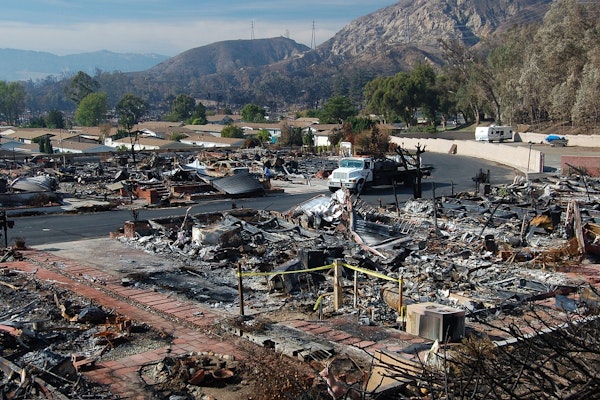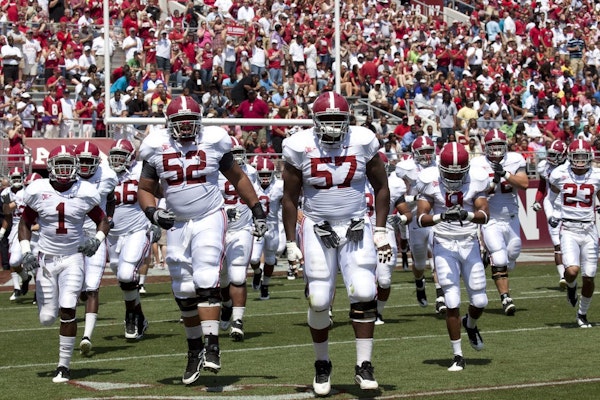
Why Coreless Architecture Is the Key to Scalable AI in Insurance
Insurers are adopting coreless architecture to scale AI, enhance digital servicing, and meet regulatory demands without discarding legacy core systems or disrupting operations.
July 10
Insurance Industry
Risk Management
Technology
Underwriting

AI Is Redefining Insurance from the Cloud Up
AI is no longer a back-office tool but a core force transforming how insurance is underwritten, processed, and scaled—with cloud, GenAI, and agentic systems leading the charge.
July 7
Education & Training
Insurance Industry
Technology
Underwriting

How Water Leak Sensors Are Transforming Insurance Economics
Bolt’s successful integration of IoT water sensors with homeowner policies significantly reduces water damage claims, reshaping insurance profitability.
July 2
Property
Risk Management
Technology
Underwriting

Unlocking Underwriting Efficiency with Agentic AI Solutions
Agentic AI empowers carriers to tackle operational underwriting bottlenecks—streamlining risk analysis, fraud detection, and workflow automation to boost capacity in today’s talent-scarce market.
June 19
Insurance Industry
Risk Management
Technology
Underwriting

Finding Common Ground in Professional Liability Defense Strategies
Early collaboration between carriers, insureds, and panel counsel in professional liability claims reduces defense costs, preserves policy limits, and strengthens renewal prospects through faster settlements.
June 19
Insurance Industry
Litigation
Risk Management
Underwriting
Louisiana
New York
Texas

Insurers Prioritize Claims Over Underwriting in Anti-Fraud Tech Use
While most U.S. insurers use technology to detect claims fraud, fewer are leveraging these tools for underwriting or internal fraud, a new survey reveals.
May 12
Fraud
Insurance Industry
Technology
Underwriting

Insurance Industry Races to Scale AI Despite Roadblocks in Deployment
Nearly 90% of insurance leaders prioritize AI in 2025, yet most remain stuck in early adoption stages due to talent gaps, data challenges, and deployment complexity.
April 4
Insurance Industry
Technology
Underwriting

Gen Z’s Mortgage Risk: Climate Change & Insurance Costs
Rising insurance premiums and climate-related disasters are forcing Gen Z to scrutinize weather patterns before buying homes, reshaping the American Dream.
March 25
Catastrophe
Insurance Industry
Property
Risk Management
Technology
Florida
Texas

AI Analysis Reveals $2.15 Trillion in US Property at Risk from Wildfires
A new AI-driven study by ZestyAI finds that $2.15 trillion worth of U.S. residential property is at high risk of wildfire damage, affecting millions of homes beyond historically fire-prone regions.
February 27
Catastrophe
Insurance Industry
Property
Underwriting
California
Colorado
Kentucky
North Carolina
South Dakota

Navigating NIL Collective Risks as Insurance Needs Evolve
NIL collectives are reshaping amateur athletics, bringing unique liability risks. Without clear regulations, insurers must assess coverage needs for management liability and compliance challenges.
February 14
Insurance Industry
Legislation & Regulation
Liability
Underwriting

Pet Insurance Expansion Brings Opportunities and Risks
The pet insurance market in the U.S. is expanding rapidly, with premiums potentially surpassing $4.5 billion in 2024. However, rising veterinary costs and market concentration pose challenges for insurers.
January 29
Insurance Industry
Life & Health
Risk Management
Underwriting

Property & Casualty Insurance Market Sustains Underwriting Profit Growth into 2025
The U.S. property and casualty insurance industry is poised for continued profitability, fueled by improving personal auto results, economic growth, and challenges in commercial lines.
January 17
Auto
Property
Underwriting
Workers' Compensation

How AI is Transforming Insurance: Opportunities and Challenges
Artificial intelligence is revolutionizing the insurance industry, enhancing efficiency and accuracy, but its adoption requires overcoming technical, ethical, and regulatory challenges.
January 8
Fraud
Insurance Industry
Underwriting

Understanding MGA Insurance: Roles, Benefits, and Industry Impact
Managing general agents (MGAs) streamline insurance operations, providing specialized expertise, niche market access, and innovative solutions to carriers, agents, and policyholders.
January 3
Insurance Industry
Risk Management
Technology
Underwriting

The Essential Role of Data Cleansing in Insurance Operations
Accurate data is vital for insurance success, impacting underwriting, compliance, and customer satisfaction. Discover how cleansing processes ensure quality and reduce risks.
January 2
Insurance Industry
Risk Management
Technology
Underwriting





